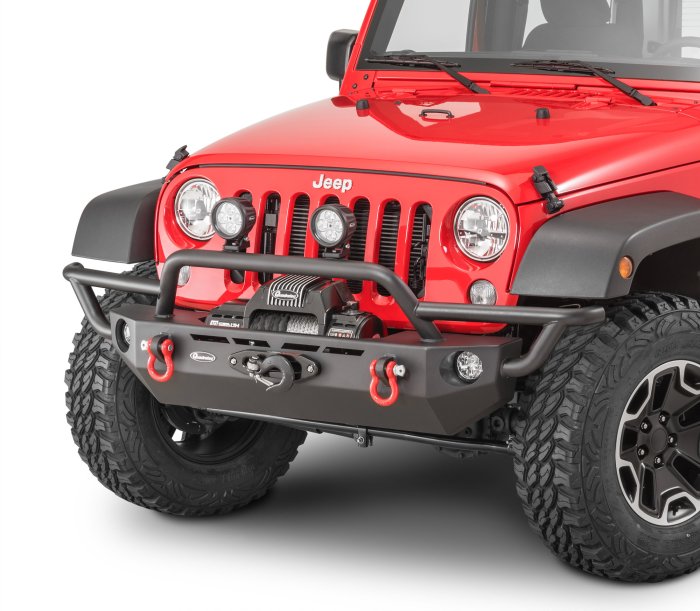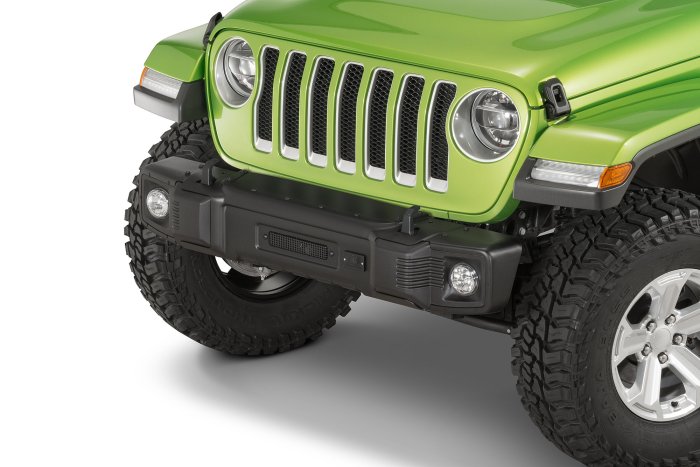Jeep bumper replacement is more than just a repair; it’s a chance to personalize your off-road legend. Whether you’re dealing with collision damage, upgrading for improved protection, or simply seeking a stylistic change, this process involves careful consideration of fit, functionality, and aesthetics. This guide will navigate you through the key aspects, from selecting the right bumper to the installation process itself.
Choosing a replacement bumper requires understanding your Jeep model and its specific needs. Factors like winch compatibility, mounting points, and the desired level of protection (steel, aluminum, or plastic) all play a significant role. Proper installation is crucial for safety and performance, often requiring specialized tools and knowledge. This guide will equip you with the information needed to make informed decisions and ensure a successful outcome.
Replacing a Jeep bumper, whether it’s a classic Wrangler, a rugged Gladiator, or a sophisticated Grand Cherokee, can seem daunting. However, with the right information and tools, it’s a manageable DIY project for many Jeep enthusiasts. This comprehensive guide will walk you through the entire process, from assessing the damage and choosing the right replacement to the installation itself.
We’ll cover various bumper types, tools needed, safety precautions, and troubleshooting common issues. We’ll also delve into the legal aspects and considerations for off-roading modifications.
Understanding Jeep Bumper Types and Styles
Before diving into the replacement process, it’s crucial to understand the different types of Jeep bumpers available. The choice depends on your Jeep model, your driving style, and your aesthetic preferences. Here are some common categories:
Factory Bumpers
These are the original bumpers that came with your Jeep. They are generally less robust than aftermarket options but are often the easiest to replace due to their straightforward design and readily available parts. Finding a replacement factory bumper might involve contacting a Jeep dealership or searching for used parts online.
Aftermarket Bumpers
This broad category encompasses a vast range of styles and functionalities. Aftermarket bumpers are often designed for specific purposes, such as:

- Off-Road Bumpers: These are typically heavier-duty, constructed from steel or aluminum, and often feature integrated features like winch mounts, recovery points, and skid plates. Popular brands include Smittybilt, Warn, and Rubicon Express.
- Stubby Bumpers: These shorter bumpers offer improved approach angles for off-roading, but may provide less protection than full-length bumpers.
- Custom Bumpers: These are unique bumpers tailored to specific needs and aesthetics, often handcrafted by specialized fabricators.
- Chrome Bumpers: A more classic and stylish option, these bumpers are typically made of steel or plastic and offer a polished finish.
Material Considerations: Steel vs. Aluminum
Steel bumpers are generally stronger and more durable but are heavier. Aluminum bumpers are lighter, often offering better fuel economy, but may be more susceptible to damage in severe impacts. The choice depends on your priorities and driving conditions.

Tools and Materials Needed for Jeep Bumper Replacement
The specific tools required will vary depending on your Jeep model and the type of bumper you’re installing. However, here’s a general list of essential tools:
- Socket wrench set (metric and SAE)
- Wrench set (metric and SAE)
- Screwdrivers (Phillips and flathead)
- Ratchet and extensions
- Jack and jack stands
- Wheel chocks
- Safety glasses
- Gloves
- New bumper and all necessary hardware
- Possibly a drill with appropriate drill bits if additional holes are needed for mounting the new bumper.
- Torque wrench (highly recommended for proper tightening)
Step-by-Step Jeep Bumper Replacement Guide
This is a general guide; always consult your vehicle’s repair manual for specific instructions related to your Jeep model and year.
1. Preparation and Safety
- Park your Jeep on a level surface and engage the parking brake.
- Use wheel chocks to prevent accidental movement.
- Disconnect the battery’s negative terminal to prevent electrical shorts.
- Wear safety glasses and gloves.
2. Removing the Old Bumper
- Locate all the bolts and fasteners securing the old bumper. These are typically located on the front of the bumper, under the bumper, and possibly along the sides.
- Carefully remove the bolts and fasteners, taking note of their location and order.
- Disconnect any electrical connectors (fog lights, sensors, etc.).
- Gently lower the old bumper and remove it from the vehicle.
3. Installing the New Bumper, Jeep bumper replacement
- Carefully align the new bumper with the mounting points on the Jeep’s frame.
- Secure the new bumper using the appropriate bolts and fasteners. Ensure they are tightened to the manufacturer’s specifications.
- Reconnect any electrical connectors.
- Double-check all connections and fasteners before lowering the vehicle.
4. Post-Installation Check
- Inspect the new bumper for proper alignment and secure fastening.
- Reconnect the battery.
- Test all lights and sensors.
Legal Considerations and Off-Roading Modifications
Modifying your Jeep’s bumpers, especially for off-roading, can have legal implications. Check your local and state regulations regarding bumper height, width, and protrusion. Some jurisdictions have strict rules about modifications that could affect the safety of other drivers or pedestrians. Improperly installed bumpers can also lead to safety issues, especially in collisions. Always ensure your modifications comply with all applicable laws and safety standards.
Frequently Asked Questions (FAQ)
- Q: How much does a Jeep bumper replacement cost? A: The cost varies greatly depending on the type of bumper (factory, aftermarket), the materials used, and the labor involved. Factory replacements might cost a few hundred dollars, while high-end aftermarket bumpers can cost several thousand.
- Q: Can I replace my Jeep bumper myself? A: Many Jeep owners successfully replace their bumpers themselves. However, it requires mechanical aptitude and the right tools. If you’re unsure, it’s best to consult a professional.
- Q: What is the best type of Jeep bumper for off-roading? A: The best bumper for off-roading depends on your specific needs and driving style. Steel bumpers offer superior strength, while aluminum bumpers are lighter. Consider features like winch mounts, recovery points, and skid plates.
- Q: How do I choose the right aftermarket bumper for my Jeep? A: Consider factors such as your budget, desired features (winch mount, lights, etc.), and the overall aesthetic you want to achieve. Read reviews and compare different brands and models before making a purchase.
- Q: What are the risks of installing a bumper incorrectly? A: Incorrect installation can lead to safety hazards, including loose bumpers that could detach during driving, damage to the vehicle’s frame, and issues with proper functionality of lights and sensors.
Resources
- Quadratec (Aftermarket Jeep Parts)
- Extreme Terrain (Aftermarket Jeep Parts)
- Jeep Official Website
Call to Action: Jeep Bumper Replacement
Ready to upgrade your Jeep’s look and functionality? Browse our selection of high-quality Jeep bumpers and find the perfect fit for your adventure! Click here to shop now!
Q&A
What tools will I need for Jeep bumper replacement?
The necessary tools vary depending on the bumper and Jeep model but generally include sockets, wrenches, a ratchet, jack stands, and possibly a drill. Consult your chosen bumper’s installation instructions for a precise list.
Can I replace my Jeep bumper myself?
While possible for some, replacing a Jeep bumper can be challenging, requiring mechanical aptitude and the right tools. If unsure, professional installation is recommended to avoid damage.
How much does a Jeep bumper replacement cost?
Costs vary greatly depending on the bumper’s type, brand, and labor charges. Expect a range from a few hundred to several thousand dollars.
